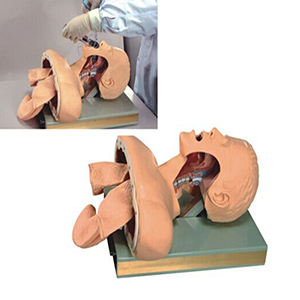

In the modern medical field, tracheal intubation is a vital first-aid skill, especially in the treatment of respiratory failure, loss of consciousness and other emergencies, but also the key to saving lives. However, tracheal intubation is a complex and risky operation that ...
In the modern medical field, tracheal intubation is a vital first-aid skill, especially in the treatment of respiratory failure, loss of consciousness and other emergencies, but also the key to saving lives. However, tracheal intubation is a complex and risky operation that requires the skill and experience of healthcare professionals. Therefore, the introduction of advanced tracheal intubation training model is particularly necessary.
First of all, it can simulate the real human airway structure to provide a safe and effective practice platform for medical personnel. These models are usually made of high-quality materials, look and feel close to the real human body, and can simulate a variety of airway abnormalities, such as narrowing of the airway and sagging epiglottis. By training on these models, medical personnel can become more familiar with the airway anatomy and intubation techniques, improving the accuracy and success rate of the operation.

Secondly, it has an instant feedback function, which can help the medical staff find and correct the errors in the operation in a timely manner. Even minor errors during intubation can lead to serious consequences. Through built-in sensors and algorithms, the advanced training model can monitor the operation process of medical staff in real time, such as intubation depth, Angle and other key indicators. Once improper operation is found, the model gives immediate feedback, prompting the medical staff to make adjustments, so as to avoid mistakes in the actual operation.
In addition, it can simulate various emergency scenarios to improve the response ability of medical staff in stressful environments. In the actual medical environment, medical personnel often need to perform endotracheal intubation operation under tense and complicated circumstances. The advanced training model can simulate these scenarios, such as patients suddenly losing consciousness, cardiac arrest, etc., so that medical staff can carry out actual drills in the simulated environment to improve the ability to respond to emergency situations.
In summary, the introduction of advanced tracheal intubation training model is of great significance for improving the intubation skills of medical staff and ensuring patient safety. Through training on these models, medical staff can be more familiar with the airway anatomy and intubation operation skills, and improve the accuracy and success rate of operation. At the same time, the real-time feedback function and the simulation of emergency scenarios can also improve the ability of medical staff to cope in stressful situations. Therefore, medical institutions and medical colleges should attach importance to the application of advanced tracheal intubation training model and provide more practical opportunities and training resources for medical personnel to enhance their professional skills and emergency response capabilities.